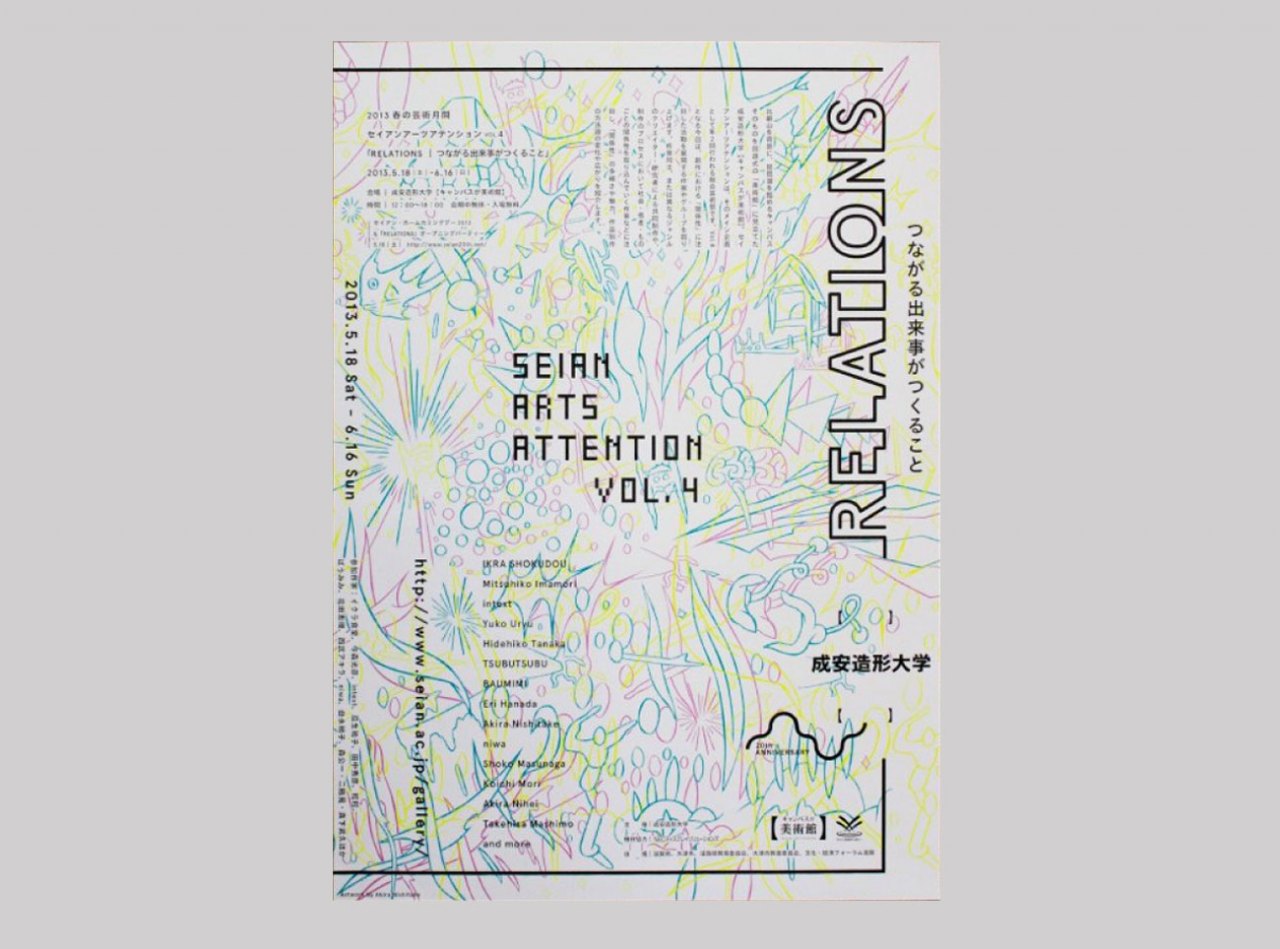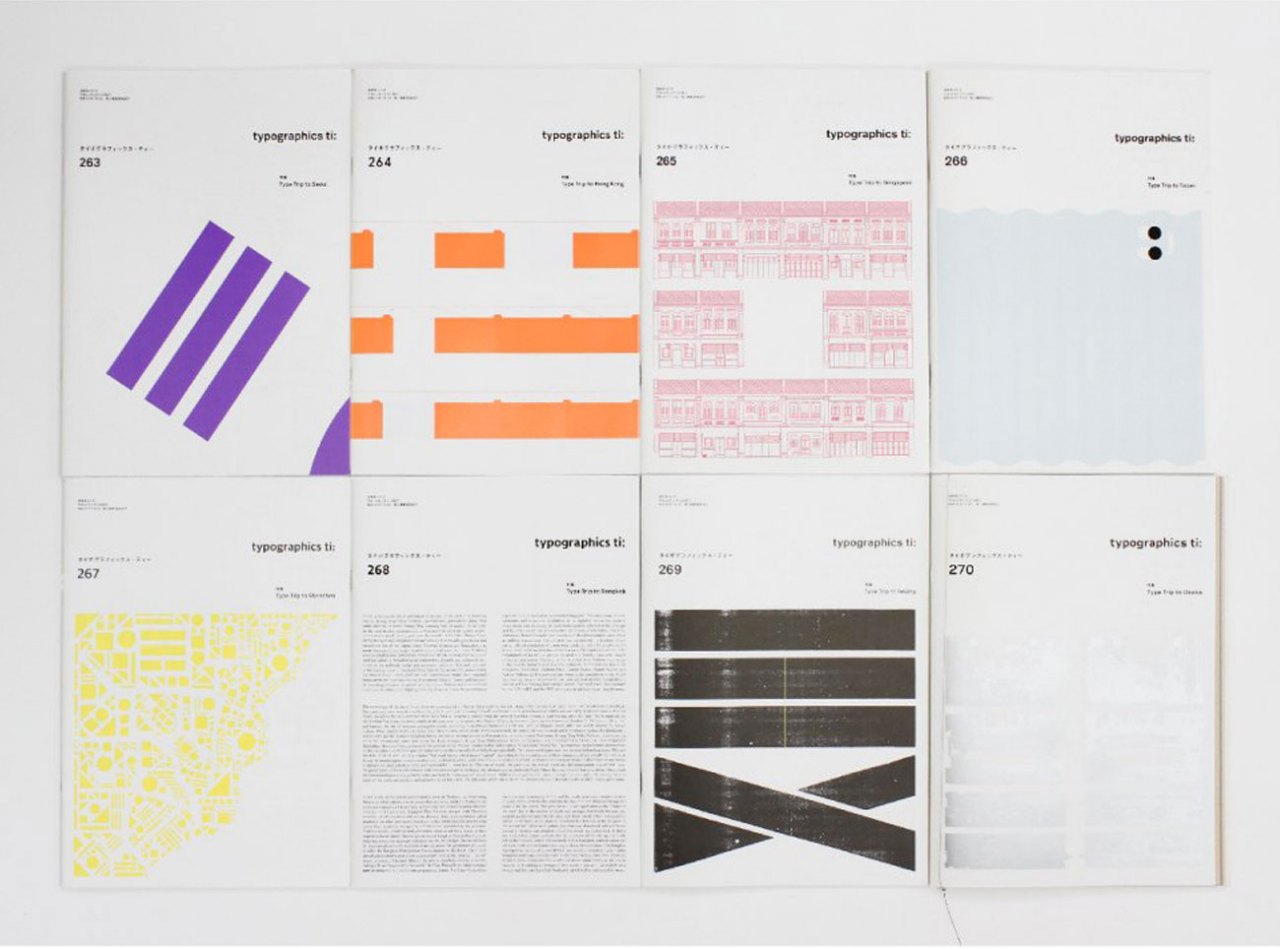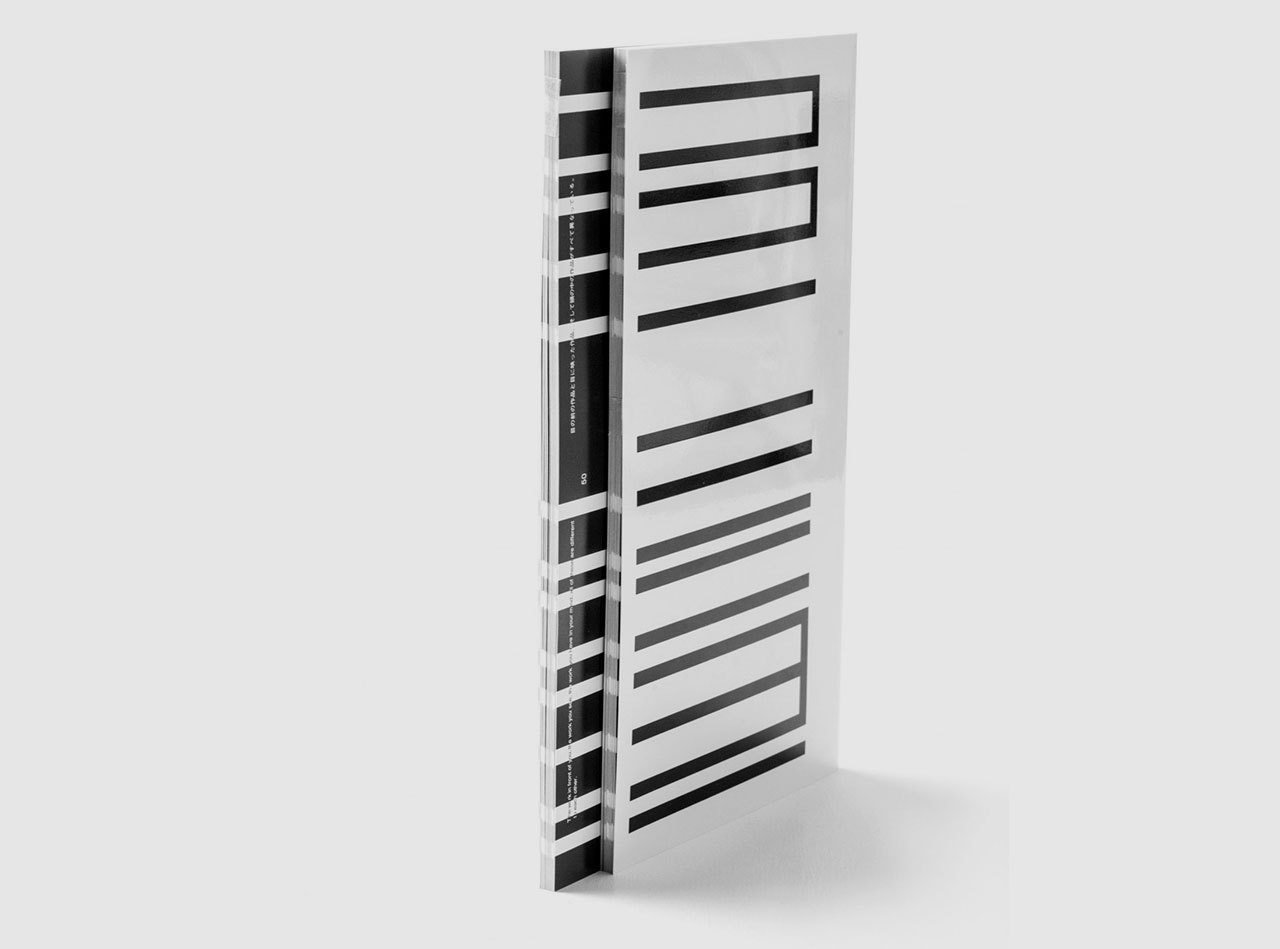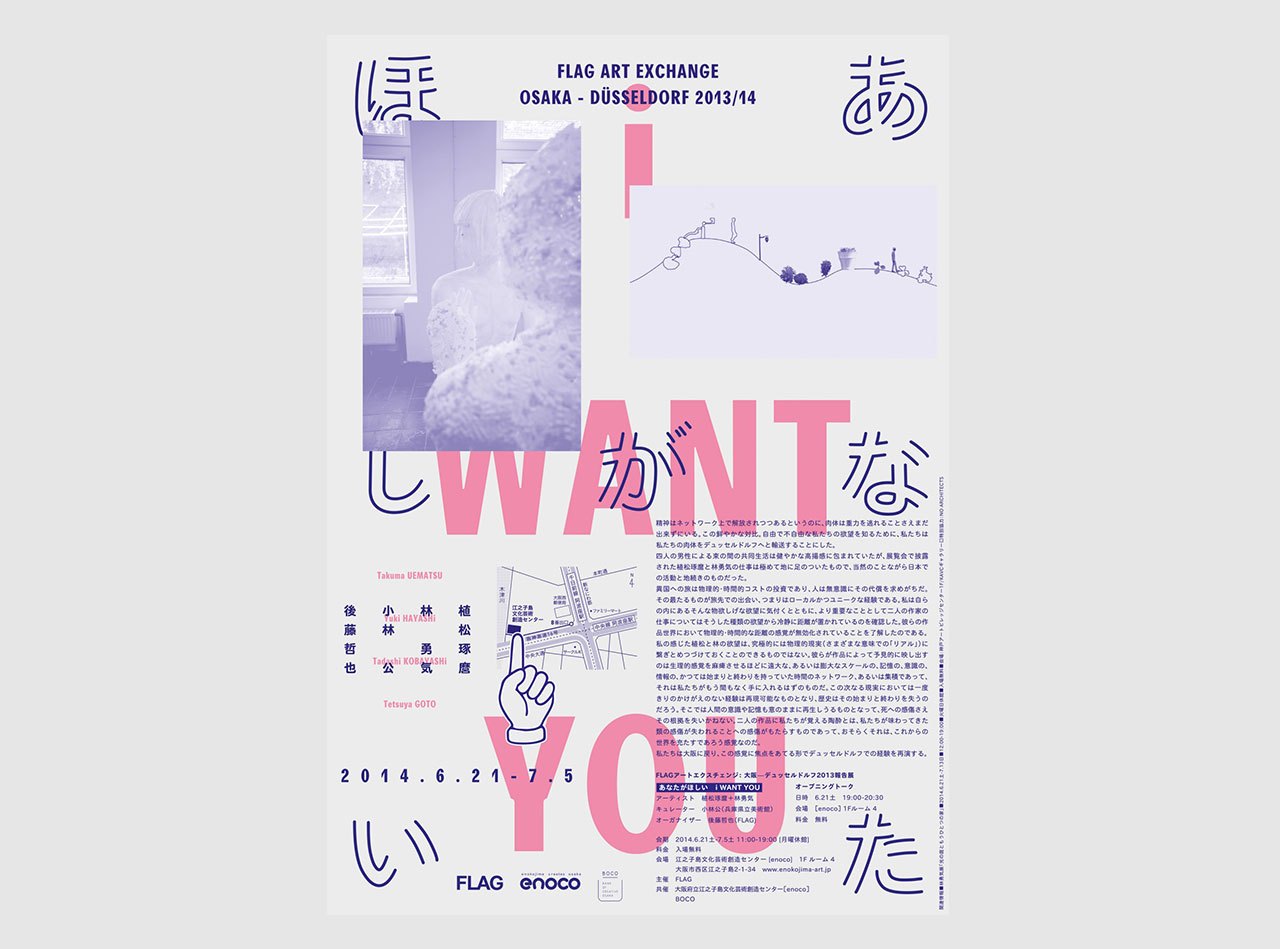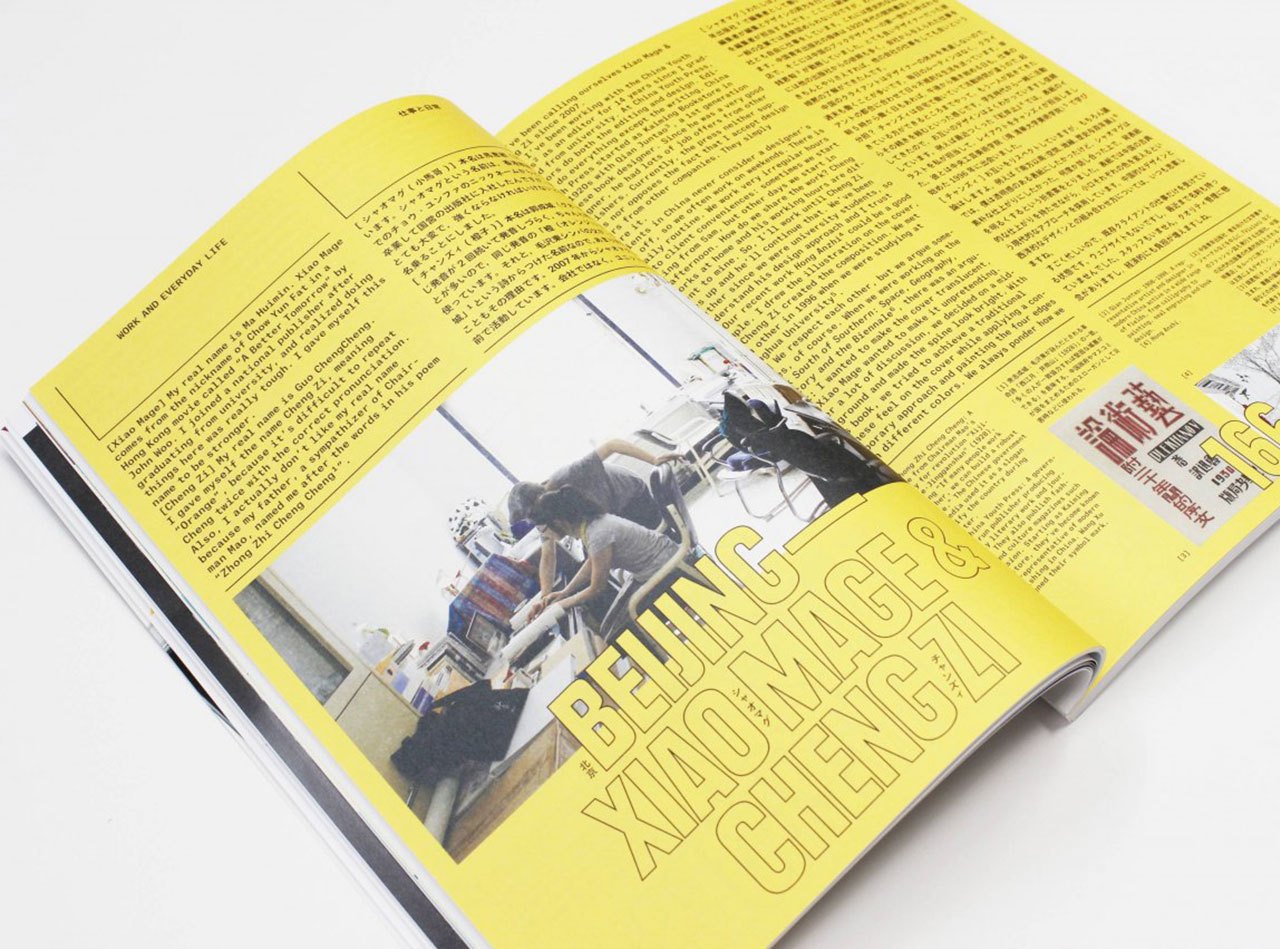Tetsuya Goto
Creative director / Designer. Born in Fukuoka, 1974. Graduated from a university of foreign studies, and studied graphic design in London for a year. After working for companies like Interbrand as a graphic designer and project manager, he set up an alternative workspace called OOO—Out Of Office in 2008, followed by OOO Projects in 2010.
http://www.outofoffice.jp/
The interview took place in January 2016. Ingo Offermanns IOmet with Tetsuya Goto TGin Osaka, Japan.
Introducing the cultural context
IOTetsuya, I suggested we meet at one of your favorite places in Osaka. You chose a small bookshop that also serves as a café and gallery. Why is this place and neighborhood inspiring for you?
TGActually I’m not the kind of person who is always looking for something new. I want to live a calm life and just be myself. This is a spot in Osaka where I can do this, where I can think deeply. This place is some kind of “oasis” in Osaka, which is known to be a straight forward and noisy metropole in Japan. And I’m not talking about traffic. I’m talking about the people. They have their own dialect and they speak loud.
In other regions of Japan, people care more about silence and collectiveness—one shouldn’t express something not necessary. Though, maybe they are thinking too much about others, so that they don’t express their opinion. Osaka people do so. This might be the reason why nine out of ten comedians in Japan come from Osaka…
IOIt seems to me that Japanese people combine Chinese, Japanese, and European influences and traditions in a unique way. Maybe Japanese culture tends to take things to the extreme.
TGThat’s true, but we don’t look upon it as extreme. We have no “western” sense of efficiency. After working some time in Europe, I realized that western people are often driven by logical thinking. They tend to plan the whole (design) working process. And when they reach the planned endpoint, for them, work is completed.
In Japan, we don’t set our goals before we start. Our “briefing culture” is very vague. I would put it this way: We are making things while thinking. We don’t come up with the thought first. We start following a promising path towards a rather vague idea, curious about where it takes us. Along the way, we might already go pass the point that we need to go, but we don’t even realize it. That’s what might look extreme to western people. Japanese people are taught to work thoroughly, deeply. Stopping halfway is not a good thing in our culture. But I have to admit, this makes us not very efficient.
IO“Mono no aware” and “wabi-sabi” are—as far as I know—two keywords in Japanese aesthetics. Mono no aware stands for the awareness of the impermanence of all things and the gentle sadness that comes with that knowledge. Wabi-sabi is characterized by the beauty of the imperfect and the incomplete. How does your working approach connect to these concepts?
TGMono no aware and wabi-sabi are somehow part of our mentality. But most people of my generation or younger generations have never really studied the meaning of them. We do understand that mono no aware is about ephemerality and that wabi-sabi is about the quality of imperfection, but when working as graphic designers, we don’t think too much about it.
IOAfter a few days in Osaka—looking at cutting edge architecture and experiencing a perfect public transit system, for example—it seems to me as if I’m in the most modern country that I’ve ever seen. Is the Japanese society as progressive as the cities you’ve lived in?
TGIn a way our customs are still influenced by traditions like Confucianism, but our lifestyle is indeed very modern. It’s complicated and somehow ambiguous: Our language is Japanese, our customs are Japanese and / or Chinese and / or Korean, but our regular life has gotten disconnected from the past. From the post-war era until now, we have completely destroyed and rebuilt Japan. So, we have no cultural constraint.
Beyond this, Japan is an island with only limited resources. We have to import a lot of things (also cultural ones). Maybe that’s why we mix for example Punk with Bossanova. Everything is even for us. We tend to translate everything into our culture to fill the gaps of our destroyed history. In that sense, we are living in a very modern, hybrid culture. It’s Japanese and at the same time some kind of new, non-Japanese culture.
IOFrom a European point of view, the result sometimes looks brash. How does this wild, mixed culture clash with the appreciation of silence that you mentioned earlier?
TGDesign-wise, there are these two sides to Japan: On one hand, we have the white, clean, restrained, almost sacred approach, represented for example by the Japanese retail company Muji. On the other hand, we have this very messy, colorful, and expressive approach that you can observe in the streets or in Manga publications. For me there is no conflict, but a diversity in our culture—that, admittedly, some people don’t want to accept as authentic Japanese culture.
IOAre there any Japanese values that could be a “role model” for other cultures?
TGConsidering positive values in contemporary Japanese culture, I would point to the ability to accept ephemerality and the ability to handle the contradictions of hybridity. One could even look at ephemerality and hybridity as two interdependent phenomena. But actually, I feel quite uncomfortable with the term “role model”…
IOLooking at your graphic design work, I recognize quite a few references to European modernism. What cultures influenced you along with Japanese culture?
TGI never properly studied graphic design. After graduating in Foreign Studies and English, I started my design practice by teaching myself. We are talking about the mid-90’s when Macintosh systems were adopted by the industry. The democratization of design work had just begun; anyone could start designing without an education in the crafts of graphic design. Back then I didn’t know anything about the history of graphic design or about graphic design scenes in other countries. My aesthetic references mostly came from music. I’m especially into music from the UK. Though I also liked Peter Saville and Tomato’s work. Republic, David Carson, and video game graphics were influential as well. But back then I just liked the artifacts. I didn’t know who made them. In a way, all of these things influenced my attitude more than my design language.
Introducing the person
IOWhat aesthetic or cultural ideas do you find particularly fascinating at the moment?
TGI’m very interested in how the concept of design—a phenomenon of western culture and history—could be translated into our culture. What most people in Japan call design is craft or art. The more abstract approach to form artifacts, which is a characteristic of design, is rather new in Japan and other Asian countries.
And there is something that I hope to achieve professionally: I want to be a bridge between people and societies. Even though Japanese culture imports a lot of resources, we still stay isolated. We’re not so good at connecting back to other cultures. This attitude has no future, and I want to help get past it by nurturing a culture of translation.
IOFor me that’s one of the core aspects of graphic design…
TGYes. And I’m not talking about mirroring or literal translation. I’m talking about a translation that takes serious cultural gaps into consideration.
IOAre there other artistic or scientific disciplines that influence your work?
TGI’m very interested in economics, because graphic design is a part of it. Even though I mostly work for cultural institutions, my work has to “sell” as well. I don’t see myself as an “artist designer”. I even think that such an attitude is problematic. My work serves others, and my responsibility is to make this work function within the editorial and economic strategies of my clients. Therefore, I’m very interested in the dynamics of contemporary economics.
Working life
IOAre there any rituals associated with your design process?
TGThere is a mutual starting point to all my projects: I start with words and texts. And I start with a notebook, not with a computer. Sketching a concept makes me focus on the purpose of the commission. By European standards that’s probably normal, but in Japan it’s a rather new approach.
IOAre hierarchies important in your work?
TGOn small projects with cultural institutions, it’s not an issue. The commissioner, editor and designer decide at eye level. But if you work on commercial projects for bigger clients, hierarchy is an important issue in Japan. The problem is that the bosses usually make decisions based on their personal tastes, changing their minds over and over again. And as a designer you have to execute all these decisions without questioning them. In my opinion that is a waste of time and money. Fortunately, in recent years, some companies have started to change their mindset. They understand the quality of a precise briefing. But the majority still stick to the top-down trial and error method.
IOHow about compromises?
TGCompromises are an integral part of graphic design, but I wouldn’t use the term “compromise”. Mutual involvement or participation are better descriptions for what I mean. As I said earlier, I don’t see myself as an artist. I’m not so interested in imposing my ideas on things or situations, but in bringing things, ideas, and people together. I don’t want to handcuff anyone. Nevertheless, I want to be taken seriously as a designer and mediator.
IOWhen do you start fighting for your ideas?
TGI’m not a good fighter. Either we get along with each other, or we don’t. The commissioners should know my work and my approach before hiring me. If there are serious misunderstandings, or if they want something opposite to what I stand for—I quit.
IOWhat are the most enthusiastic and the most frustrating moments in the design process?
TGThe most enthusiastic moment is probably the beginning, when I’m sketching with words, sentences, and basic forms. This is a moment of understanding and virtual creating—when you feel a conceptual breakthrough. Then, I have a feeling of clarity and genius.
But sometimes when I try to bring these thoughts into a precise form, I’m confronted with a lack of skills, aesthetics, and so on. You have to struggle not to loose this clarity. This is probably the most frustrating moment.
IOWho do you get your feedback from?
TGI go to non-Japanese people, because Japanese people don’t give honest feedback.
IOWhat is more important for you, the design process or the final product?
TGI should answer that the product is the most important thing, but I continue doing this profession because I really enjoy the process.
IOBeing a graphic designer—is it a dream job?
TGSince I’m my own boss, being able to organize my workday by myself, I feel like I’m in an ideal position. I can work on whatever fascinates me. Yet, I don’t know if it’s a dream job in general. You can’t make a fortune with it, and you have to put a lot of effort into it…On the other hand, graphic design contributes to society. So, personally, I’m really satisfied.
Attitude
IOWhat are the qualities of good graphic design?
TGGood graphic design is a visual artifact that functions. Beauty that doesn’t function is insufficient graphic design. It should be logical, beautiful, and functional at the same time.
IOHow important is individuality to you?
TGIndividuality is very important for me. You might think that this clashes with the general appreciation of collectiveness in Japan, China, or Korea. But I’m not talking about creating a distinctive and witty profile of myself. I’m talking about deciding for myself. A lot of people in Japan don’t think for themselves. They conduct their lives according to what others expect or do.
IOBig question: Is graphic design important?
TGYes, definitely. But I am not sure whether graphic design defined by graphic designers is important. Visual communication is an integral part of complex societies. Particularly in modern capitalistic societies, it guides people‘s attention. This is a quality, but also a danger. And that’s why it should be taken seriously.
IOWhat are the important notions in Japanese graphic design?
TGCraftsmanship and detail are important notions in design, architecture, and art. A lot of people would probably also say concept, but in my opinion that’s a self-delusion. I really think that Japanese design is more about composition and refinement. Maybe one could even state that there’s a lack of concept in Japan. I think this has to do with the structure of Japanese society.
Japan is a highly contextual and hermetic society. Only 2 percent of our population is non-Japanese. Although we have some ethnic particularities, like for example the Ainu in Hokkaido, we basically all look the same and are brought up within the same environment, cherishing the same codes of collectiveness. In daily life we don’t really need to explain ourselves. Mutual context creates easy understanding. It may sound funny to you, but almost everything can be communicated without a smart concept—because within a concept, you don’t need a concept.
But, as I said earlier, Japanese graphic designers are getting more and more curious about the concept of concept.
IOLast question: Can graphic designers change society?
TGI don’t think graphic designers can change society, but they can change the design of society.
